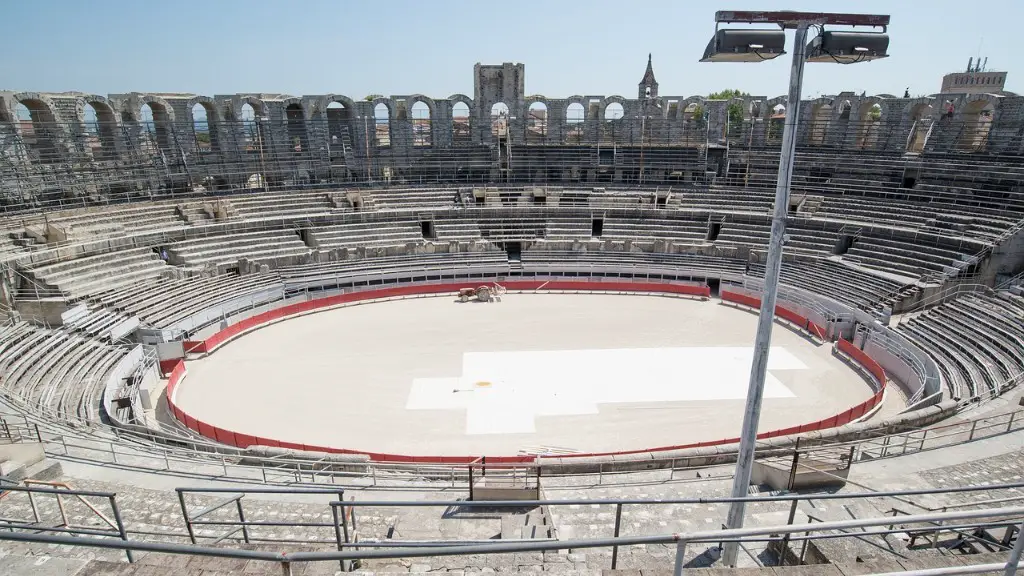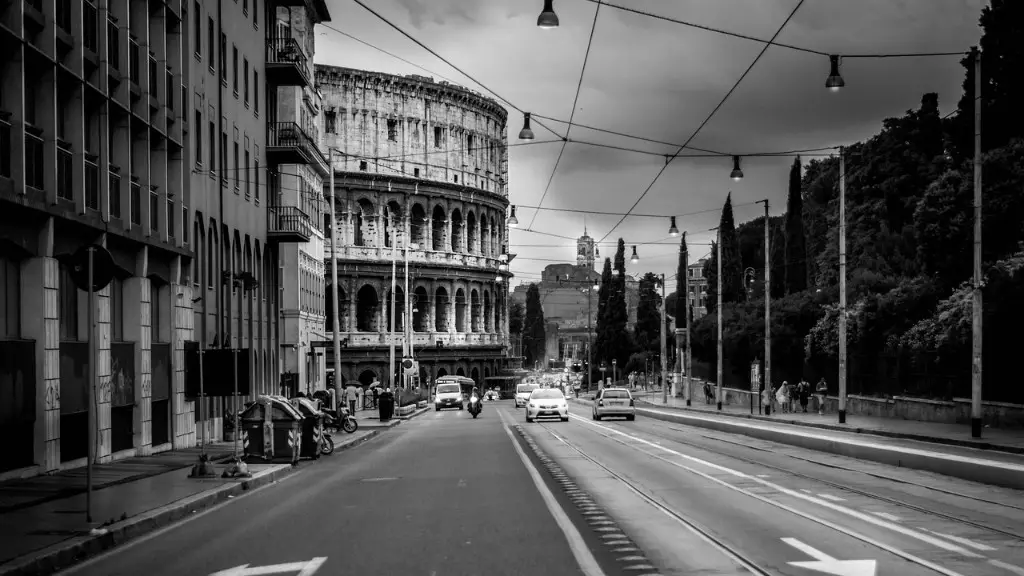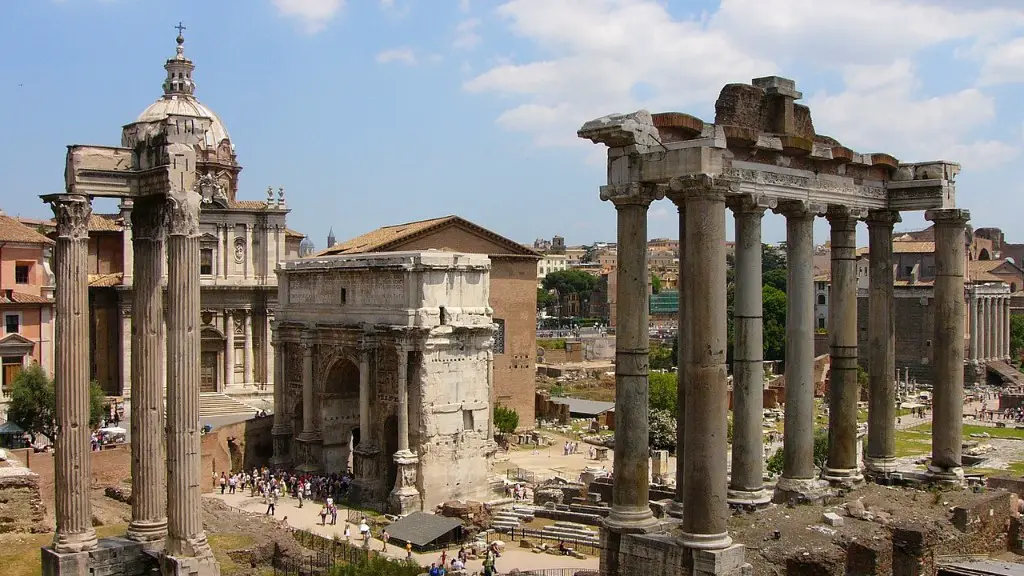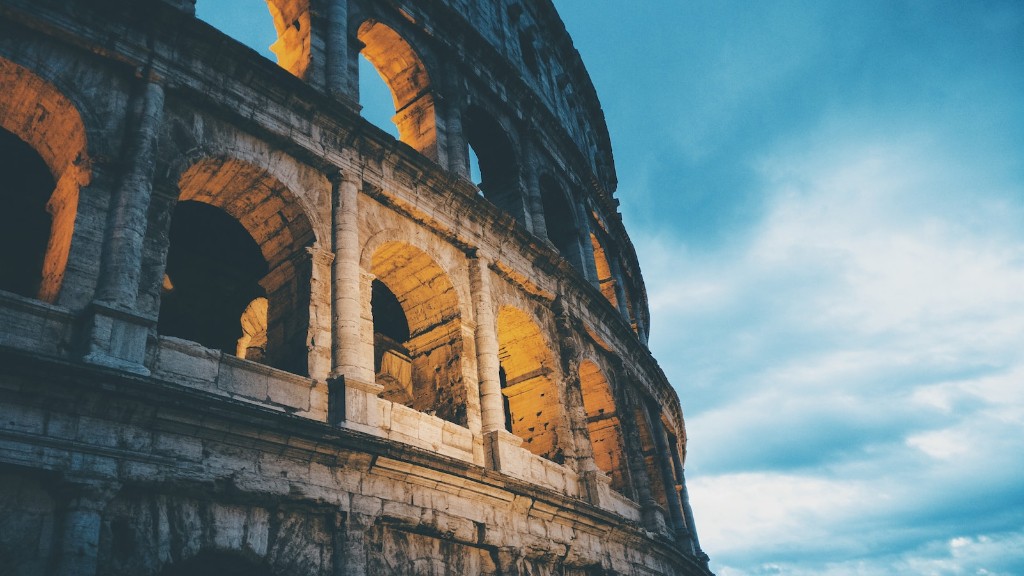Ancient Rome has often been referred to as the eternal city, as it has been around for thousands of years and has seen many different rulers come and go. One of the most important and influential empires in history, Rome left its mark on the world in many ways. From its legal system and engineering feats, to its art, literature and monuments, it is clear that Ancient Rome was an expansive, thriving and prosperous place – but just when was Rome’s peak year?
Experienced academics and historians alike often debate the exact peak year of Rome’s prosperity. The answer is not clear-cut, as there are several factors that need to be taken into consideration. Augustus, often considered to be the most successful of ancient Rome’s ruling emperors, was credited with restoring peace and prosperity to the region. Therefore, historians often point to his rise in provinces under his rule as indicating a peak year.
The majority of academics agree that the peak of Rome’s power and prosperity would have been during the reign of Augustus; which lasted from 27 BC to 14 AD. His success was clear in areas such as the expansion of the Roman Empire and the instigation of a period of relative peace and stability – despite the fact that there were several successful and powerful rulers before Augustus. For example, until his death in 44 BC, Julius Caesar made great advances in Rome’s military success. He extended Roman territory to modern-day England, France, Spain and Greece.
The period of Augustus’ rule was often deemed Rome’s “golden age”, as it was marked by peace and prosperity and marked the height of Rome’s success in conquering and expanding its territories. In particular, Augustus was successful in establishing colonies in Gaul and Dacia, which promoted trade and commerce throughout the region and further integrated the Roman Empire into Europe.
In addition to military and political successes, Augustus also promoted civil and cultural projects throughout the empire. He restored the Senate and consolidated power with the establishment of a new form of government. Through this he was able to restore many public projects, such as the expansion of the Forum, the construction of aqueducts and the restoration of public baths. These projects, coupled with Rome’s dominance in areas such as law and engineering, meant that the Roman Empire as a whole, was flourishing and successfully integrating with other European countries.
Although, definitively naming the peak year of Ancient Rome is extremely difficult and impossible, due to the complexity of the empire. The period of Augustus’ reign is generally accepted as the golden era of Ancient Rome which saw the most productivity and civilization develop, evolving Rome into its most majestic and spectacular form.
The Rise of Julius Caesar
Roman General Julius Caesar rose to power in the years leading up to the peak of Ancient Rome. Once defeated enemies such as the Gauls, Caesar continued to openly commit atrocities and exploit those in power to quickly expand the borders of the Roman Empire. Caesar undertook large-scale campaigns, which were overseen by a cavalry force he referred to as “Sentinels”; this group further expanded his power in areas such as Gaul and the Balkans. Caesar specifically used his impressive military capabilities to solidify his stance on power, relying on his troops as a tool to keep him in complete control.
It is believed that Julius Caesar’s expansion was the greatest of all Roman leaders in history, and was arguably the catalyst that began Rome’s climb to a peak year in its power and prosperity. He transitioned Rome from a Republic to an Empire, and his decisions impacted many areas of economics, politics, the military and even philosophy.
He oversaw the construction of numerous engineering feats such as the construction of the pont du gard’s aqueduct and even the famed Colosseum, one of the most recognizable symbols of Rome’s past. Despite his accomplishments, many historians believe that without Augustus’ rule and the ingenuity of successive rulers, Julius Caesar’s contribution to Ancient Rome wouldn’t have been as universally influential.
The Expansion of the Roman Empire
It is clear that Augustus’ reign was marked by many successes, one of which was that the Roman Empire expanded its territories significantly over this period. Under Augustus’ leadership, new provinces such as Gaul and Dacia gained recognition for the first time in their histories. This greatly improved trade and commerce in the region, integrating new provinces into the empire and creating a prosperous atmosphere for everyone.
The extension of the Roman Empire was an important step in creating the peak year of Ancient Rome – an atmosphere of relative peace and prosperity. In addition to creating wealth, the expansion of the Roman Empire also created more opportunities for Roman culture to spread. It provided a platform for political and religious beliefs to reach further corners of Europe – helping the Roman Empire to grow even further.
The expansion of the Roman Empire even had immense implications on Christianity and the spread of the religion. With an increased influence in the area, the religion slowly began to spread itself across the Roman world, allowing its followers to slowly convert the masses with their teachings. Furthermore, as the Roman Empire expanded, architecture and art began to evolve, reflecting the new cultures, religions and customs of the provinces.
The presence of Rome in Europe saw a blossoming of the sciences, literature and philosophy – for example, Roman law came to be used throughout all realms of the empire. It was through this spread, that Rome was able to gain its peak and leave a lasting imprint upon Europe and beyond.
Cultural and Artistic Achievements
It is worth noting that Augustus’ rule not only saw the expansion of the Roman Empire, but also the enrichment of its culture and arts. The emperor himself was a skilled orator and patron of the arts, providing financial support to various artistic endeavours. The Augustus of Prima Porta, a marble sculpture of Augustus, was commissioned to celebrate his achievements, and the sculptured friezes of Trajan’s Column, assembled to celebrate Trajan’s victory against the Dacians.
Not only were artistic achievements particularly prominent during this era, but it also saw the rise in literature and philosophy. Perhaps the most prominent author from this period is Virgil, the creator of the Aeneid. This poem gave a new spin on Roman history, providing a narrative for the heroic struggles of Aeneas, and embodies Roman political, moral and religious views at the time.
Furthermore, the peak year of Ancient Rome also saw a flourishing of engineering feats. The most iconic of these is the Colosseum, which took 8 years to construct as a symbol of Rome’s power and dominance over the world. Other engineering initiatives included the construction of aqueducts and bridges, which increased trade and commerce, allowing new resources and goods to be sent throughout the empire.
Cultural Legacy
It is clear that the peak year of Ancient Rome had a lasting impression on the world. Several of Rome’s architecture, art and literature can still be seen and read today. In terms of architectural achievements, Rome is home to some of the most impressive monuments in the world such as the Colosseum, Pantheon and the Roman Forum, which were all constructed during the peak of Ancient Rome. Rome’s literature lives on, with Virgil’s works still being read today, as well as countless other authors whose works provide a glimpse into what life was like during the peak of Ancient Rome.
The peak year of Ancient Rome also left its mark on the legal system. The Roman legal system influenced much of the modern law around the world, with many countries adopting the legal principles of Ancient Rome. This includes the philosophies of Natural Law and Equity, which encourages a more humane approach to legal interpretation and allows for justice to be served without rigidity.
The peak year of Ancient Rome is important to remember and reflect on. The civilization had a huge impact on the world, with its influence on literature, architecture, art and law still being felt today. Furthermore, the peak of Ancient Rome was significant in allowing Rome to become a leading power in the region and to expand its empire. Thus, it is clear that the peak year of Ancient Rome was hugely influential and produced a lasting legacy.
Conclusion
Ancient Rome’s peak year has been the subject of much debate amongst academics, with some deeming it as the golden era of Rome. Historical evidence suggests that Rome reached its highest level of prosperity during the reign of Augustus, with his successes in battles, engineering feats and other public projects greatly contributing to the enrichment of the empire. In addition, Augustus was also a patron of the arts and literature, which provided new ways for Roman culture and beliefs to spread throughout the empire and beyond. Julius Caesar, although highly successful in expanding Rome’s territories, cannot be credited with the peak of Ancient Rome, as only thanks to Augustus’ rule was the region able to reach such heights. Ancient Rome has left a massive legacy and its influence can still be seen and felt to this day.




